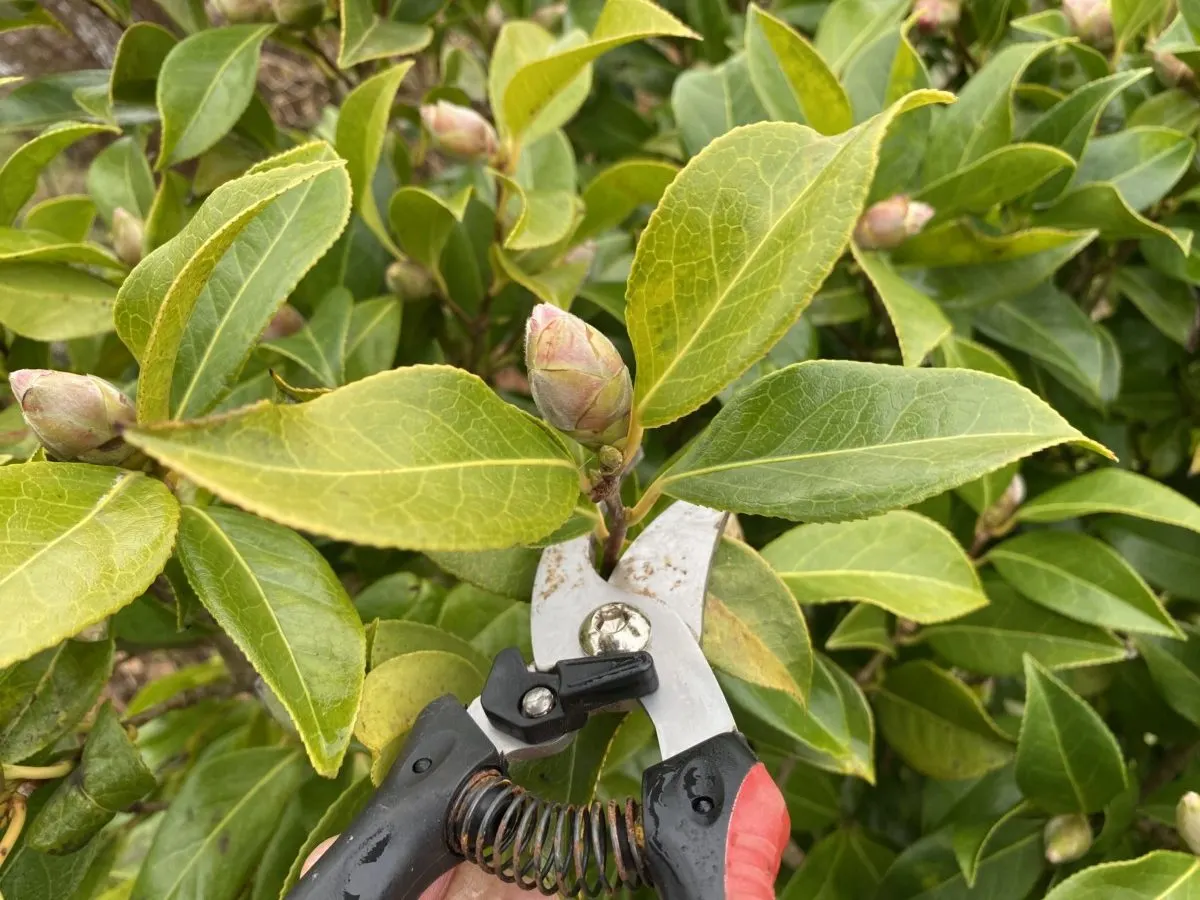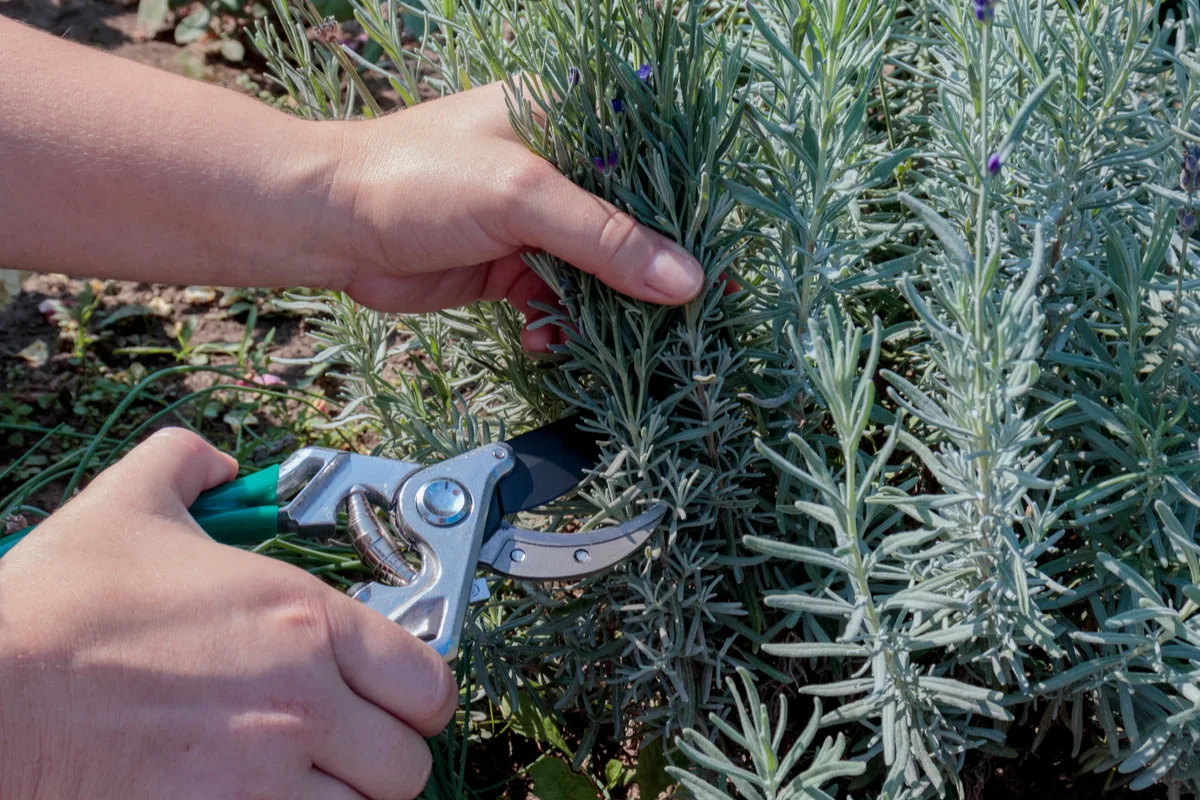
It’s time to prune my buddleia.
Obviously, I want to document this gardening job for our readers as I’m doing it. But I have to admit that I get a little bit nervous whenever I write about the butterfly bush (aka Buddleja davidii). A lot of our readers love and grow this colorful blooming shrub. But at the same time, there are people who are dead set against it.
The reason is that buddleia (or buddleja, if you prefer this spelling) can be invasive in some areas. If you suspect that’s the case in your area, the best place to check for lists of invasive plants is your local university’s agricultural extension.
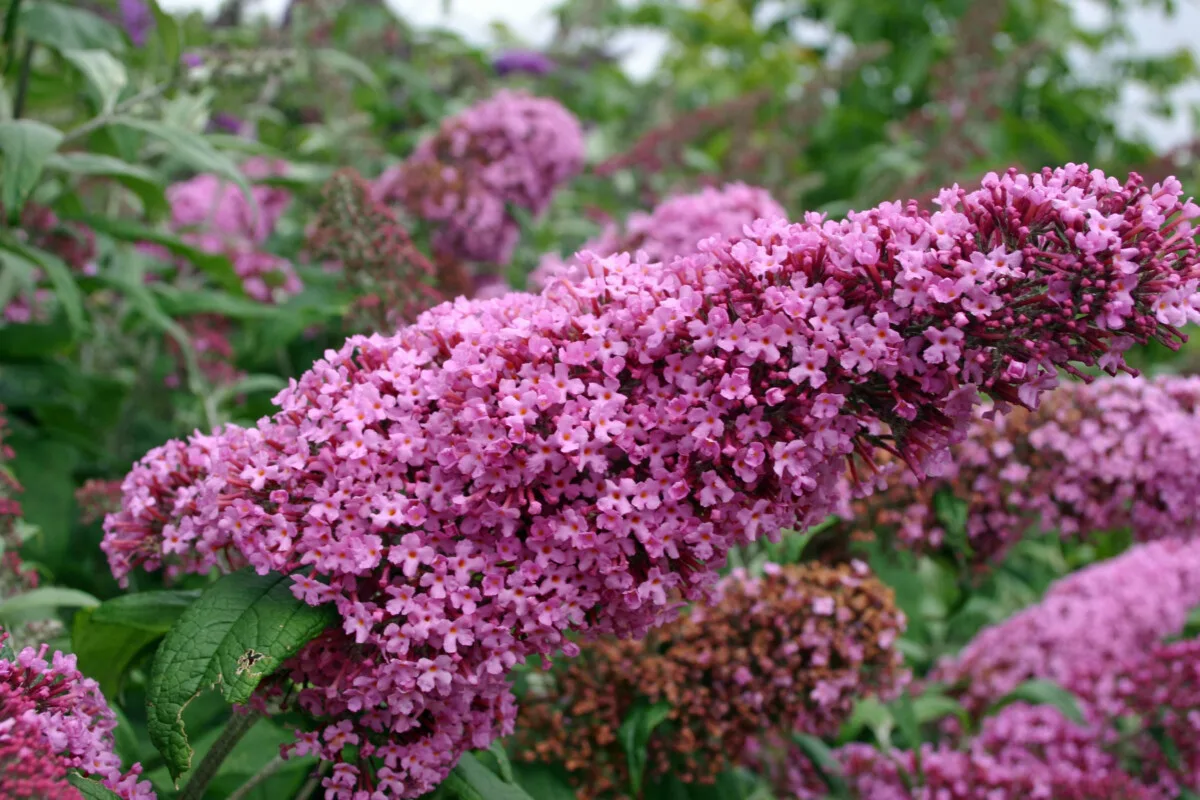
However, it’s worth mentioning that we’re beginning to see more and more sterile butterfly bushes being developed in recent years. This means that the plants still have nectar, but produce no viable seeds, or fewer viable seeds than regular buddleia. The Cascade series and the Chrysalis series are two such sterile cultivars.
But pruning is also a good way to keep a rowdy butterfly bush in check. And now’s the perfect time to do this gardening task in my garden.
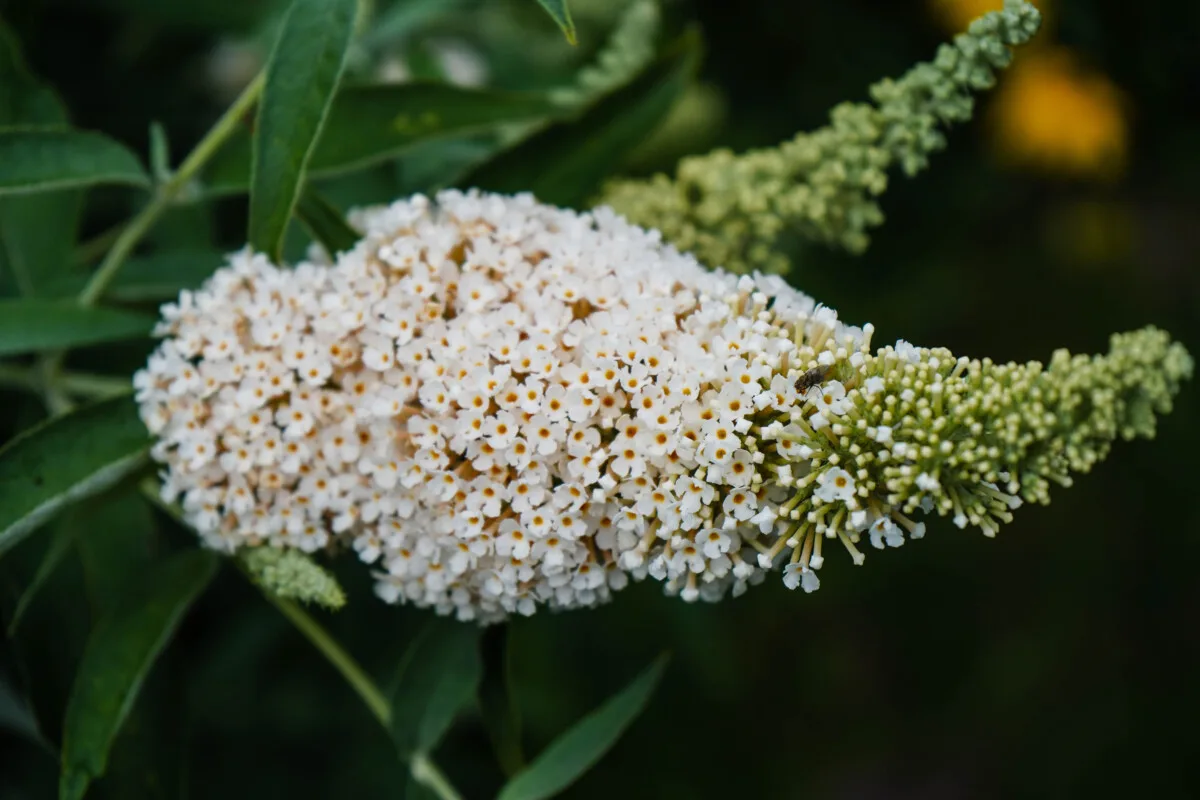
One more thing, before we get into the tutorial part of the article. This advice applies to Buddleja davidii (the butterfly bush) that will flower in the summer on this year’s growth. It does not apply to Buddleja globosa (the orange-ball tree) or to the Buddleja alternifolia (the fountain butterfly bush). These latter two set blooms on last year’s growth. So pruning them now would mean they won’t bloom this year.
Related Reading:
When should I prune back my butterfly bush?
Buddleia (Buddleja davidii) is a shrub that flowers on new wood. This means that the flowers will show up on this year’s growth. So the best time to prune it is in early spring.
I find it easier to prune it in spring, as soon as it starts growing again, because I can see exactly where the new shoots are. That will give me a good indication of where to cut, always just above a new bud or shoot. We’ve had a very mild winter this year, so my butterfly bush is already opening up its leaf buds.
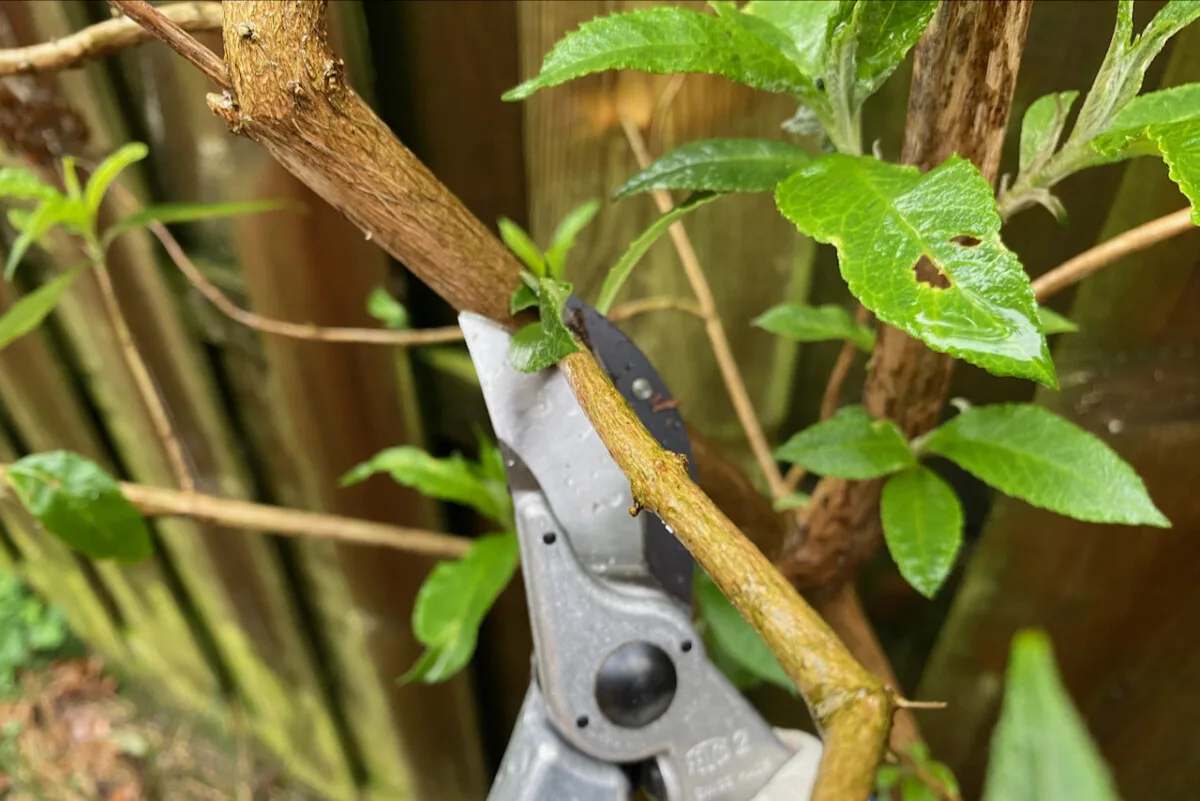
If you live in a colder zone, err on the side of caution and aim to prune around the last average frost date. The butterfly bush may have a reputation for being hard to kill, but even so, it’s better to keep the insulating branches on the shrub longer. Removing them, and the sugars that are stored in them, risks making the shrub less winter hardy.
How far back should I cut my butterfly bush?
I’ll talk about two ways to prune a butterfly bush. Or rather, two pruning heights.
You can choose whichever one you want – there’s no wrong answer. But there are a few factors to keep in mind before you start cutting back.
First method: Prune your buddleia waist-high.
What waist-high means is highly subjective.
In my estimation, this translates to about 30-35 inches (around 75-85 cm) tall. In other words, you’re taking the shrub down to about a third to a half of its size.
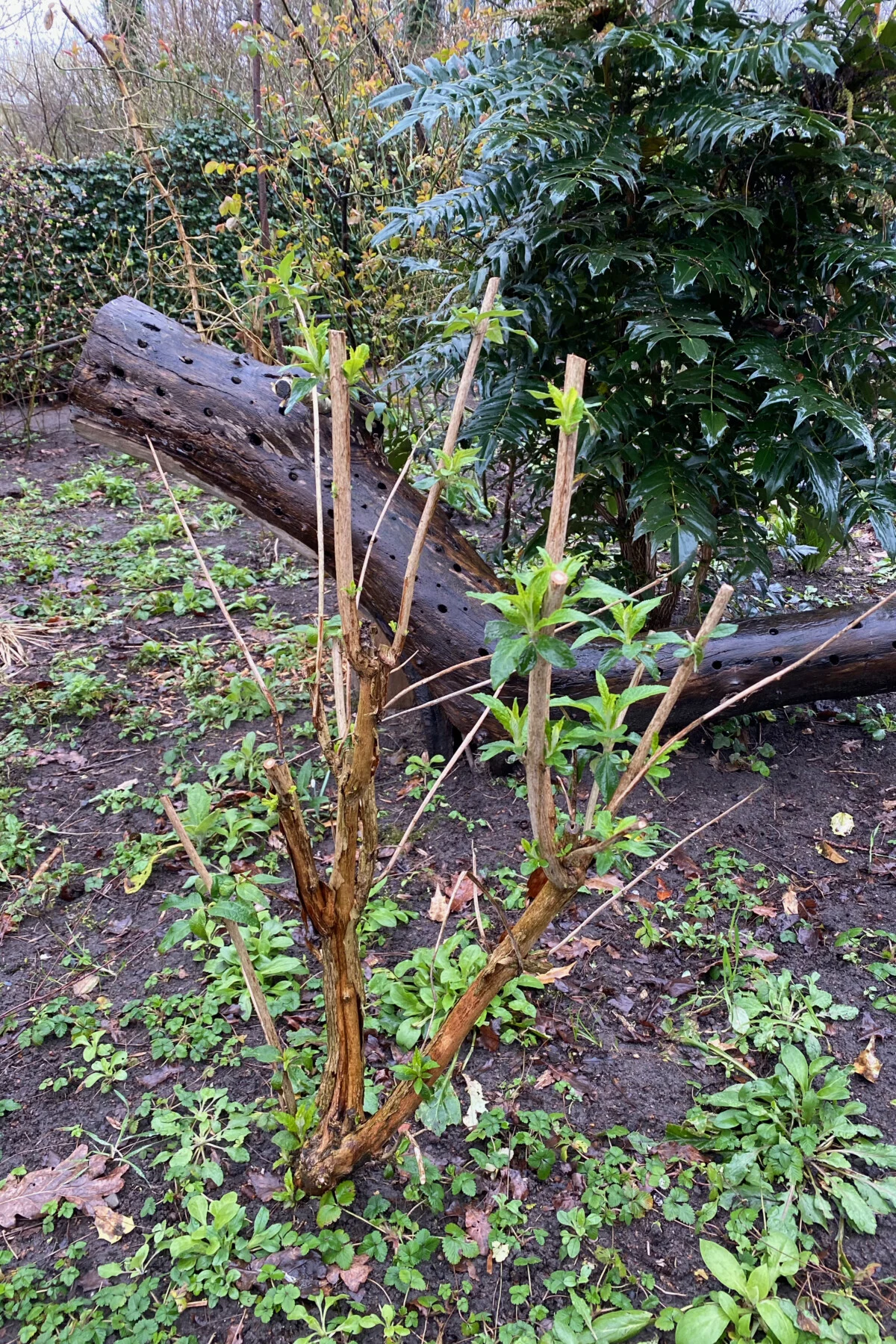
I prefer this type of pruning because my butterfly bush shrubs are growing against a fence. So I want the flowers to peek over the fence, slightly, at the height of summer. If I trim the stems back to a stump, it won’t have time to grow this tall considering my short growing season.
You may also want to keep to this height if you’re growing miniature buddleia or if your shrubs are at the back of the border.
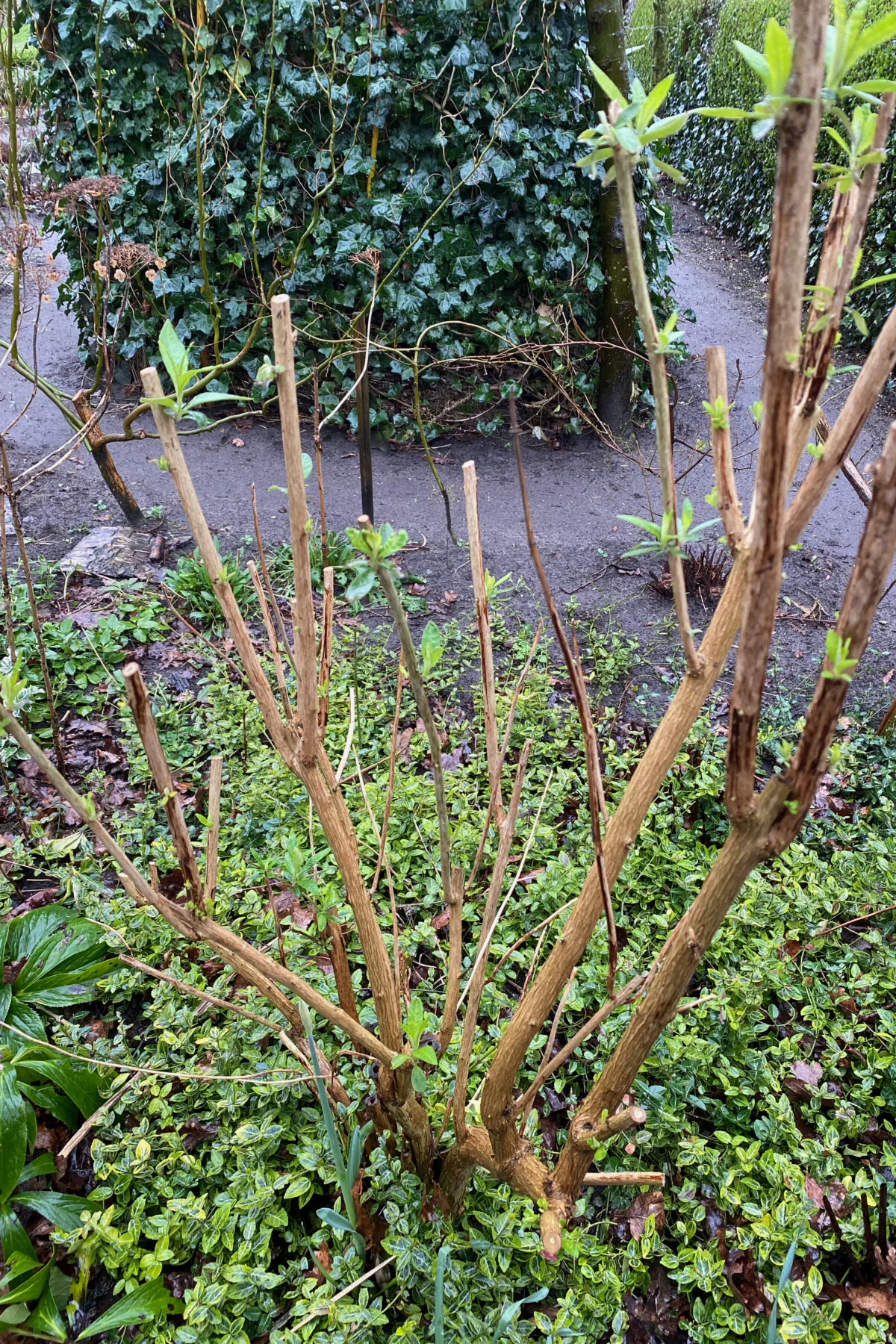
Here’s how to prune buddleia
Step 1: Have a look at the whole shrub to see where the branches are starting to look thinner and weaker. Prune these weaklings away down to the strongest growth. Make sure you cut just above a node or a bud.
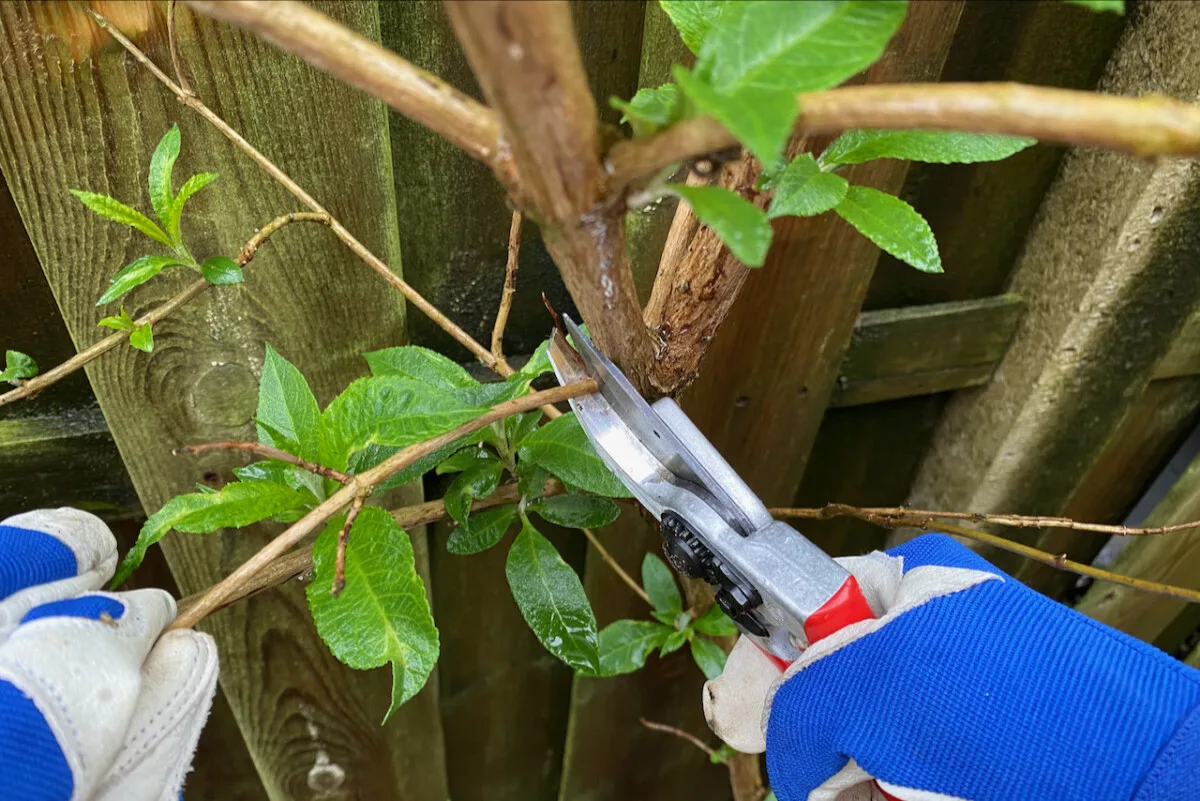
Step 2: Now you should be left with the more sturdy branches. For these thicker branches, I prune them down to around 30-35 inches, again cutting right above a node. For every branch, I aim to leave on at least three sets of buds, if possible.
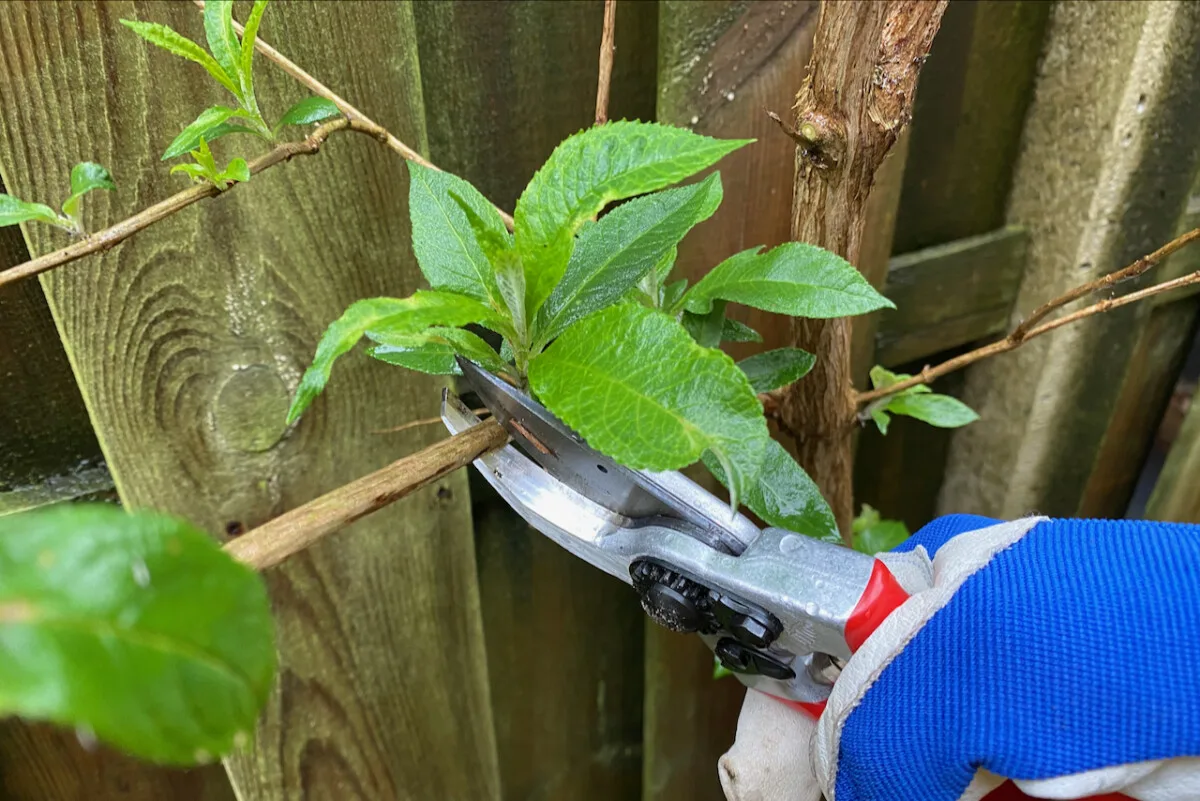
While you’re at it, cut off crossing branches to prevent them from rubbing against each other.
Then remove any shoots sprouting from the stump.
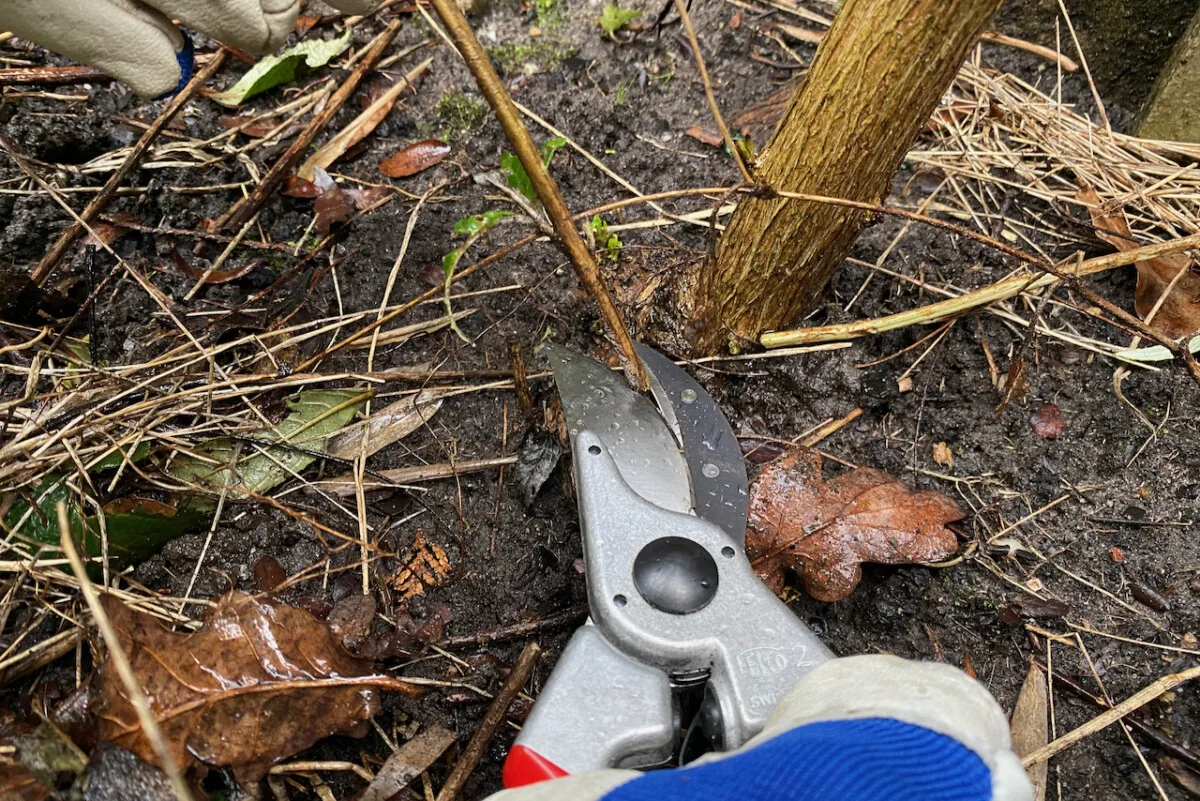
By the end of it, I usually get about four or five main branches that will serve as a framework for this year’s growth. You may end up with more branches if your shrub is larger though.
Second method: Prune your buddleia down to a stump.
This hard pruning takes all the branches down to the stump. That means we’re pruning as low to the ground as possible. This won’t kill the shrub. On the contrary. Because it flowers on new wood, buddleia can withstand rigorous pruning in spring. By midsummer, you’ll get a mass of vigorous new growth topped up with nectar-rich flowers.
You can prune it this way if you have an old, established shrub, or if your buddleia is in a spot where it might impede the growth of other plants in your garden.
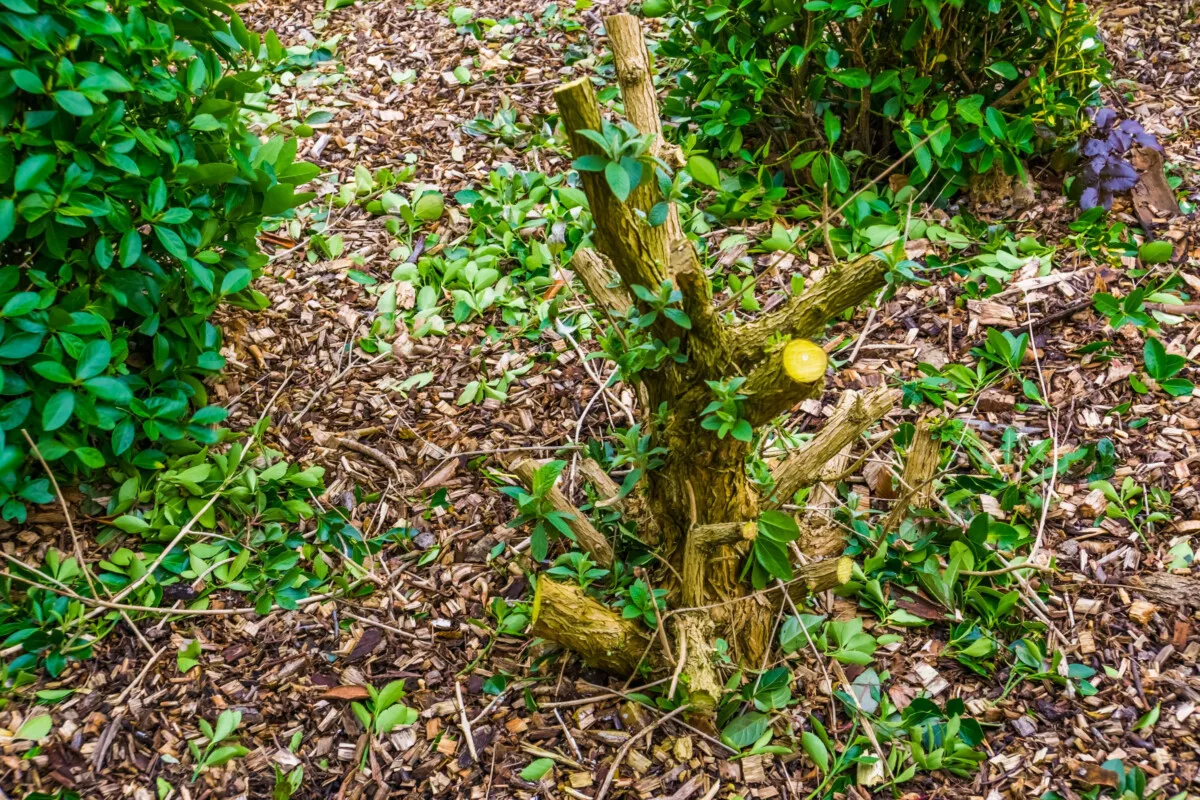
Keep in mind that, depending on how thick the stump is, you might do the job better with a pruning saw or a pair of loopers rather than secateurs.
Even when I prune back to a stump, I find it easier to cut back in stages, especially if I’m trimming a larger shrub. First, I take back half of the top growth, to be able to see what I’m doing. I assess from there and remove the rest of the branches left. Just like in the first method, I aim to make all my cuts just above a bud.
What happens if I don’t prune my butterfly bush this spring?
Your buddleia will still grow if you don’t prune it, but the growth will start from the existing frame. The new branches will grow as an extension of existing branches, thus making the butterfly bush even lankier.
Since buddleia are very fast-growing shrubs, by the end of summer you’ll end up with a tall but spindly plant with flowers at the very top. Perfect height for butterflies, but really out of sight for us.
And since you got those pruning shears out, have a look at these other plants that you could prune in spring.


